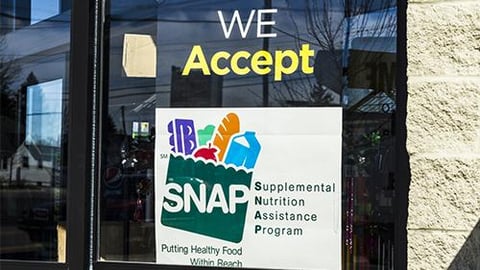Food Retailers Can Earn Grants for Healthy Food Access
Good eating can have its rewards — and that includes for food retailers that have kept selling fresh and healthy foods during the pandemic.
A recently announced program in Pennsylvania will direct $10 million in grants to state businesses that have worked to maintain access to fresh, healthy food throughout the COVID-19 pandemic, according to the office of Gov. Tom Wolf, a Democrat who’s had that job since 2015. The move comes as federal, state and local governments try to increase access to fresh and healthy food to more people, including those with relatively low income, during the pandemic.
The Pennsylvania grant money comes from the state’s Fresh Food Financing Initiative COVID-19 Relief Fund, which is funded via the federal Coronavirus Aid, Relief, and Economic Security Act, better known as the CARES Act. Grants are available to for-profit, nonprofit, or cooperative entities impacted by COVID-19, including grocery stores, corner stores, convenience stores, neighborhood markets, bodegas, food hubs, mobile markets, farmers markets, on-farm markets, urban farms, and food aggregation centers with a direct connection to direct-to-consumer retail outlets.
Minority Focus
Eligible recipients must earn more than half of their sales from staple and perishable foods to consumers, and the retailer must serve customers that live in a low-to-moderate income area. Applicants must also provide access to affordable, high-quality fresh produce, meat and dairy products and other healthy grocery items for low-to-moderate income shoppers, and must accept SNAP and WIC to the maximum extent possible.
Priority will go to Pennsylvania businesses owned by “Black, Indigenous, and People of Color,” the governor’s office said. “Additional prioritization criteria include businesses located in or serving a USDA-designated food desert; businesses sourcing and selling Pennsylvania grown or processed products to the extent practicable; and applicants with supplier diversity and offering increased business opportunities” to minorities and veterans.
Grant applications will be accepted until Aug. 14. The state aims to have the grants cover equipment, operational and other expenses that helped maintain access to fresh and healthy food during the pandemic.
“Pennsylvania’s food retailers stepped up to the plate to protect those putting food on the shelf, to think outside of the box to protect the most vulnerable, and to make investments to support those using assistance programs such as SNAP and WIC to support their families,” said Wolf. “I will be forever grateful to those who have worked hard to ensure food is always accessible through this pandemic; our frontline workers in grocery stores and farmers markets are among Pennsylvania’s heroes.”
Other Programs
Measures to increase access to such food — especially among low-income consumers — were in place before the pandemic and its resulting store closures and job losses. But the past few months has brought renewed efforts by some states — even through other programs that might not match exactly what Pennsylvania is trying to do.
Such work, fueled by the pandemic, promises to continue for the foreseeable future, especially as some unemployment payments are about to expire, and more consumers face the threat of evictions. Earlier in July, for instance, National Grocers Association (NGA), which represents the independent grocery sector, has thrown its support behind the Expanding SNAP Options Act of 2020, introduced July 2 by Sens. Dick Durbin, D-Illinois, and Tammy Duckworth, D-Illinois. The legislation seeks to lower the barriers for independent grocers to take part in the SNAP Online Purchasing program.
Through the SNAP public-private partnership, independent supermarkets serve millions of Americans who need food assistance. During the COVID-19 crisis, the number of customers using online and delivery services to buy groceries has increased significantly, as did the number of Americans participating in SNAP.
However, as of March, only a few states and retailers had the authority to permit SNAP participants to use online services to buy groceries. USDA responded to this state of affairs by expanding its SNAP online purchasing pilot program and enabling more states and retailers to take part. SNAP online purchasing is now allowed in 43 states and the District of Columbia, but many independent retailers still face obstacles in offering the program to shoppers.





